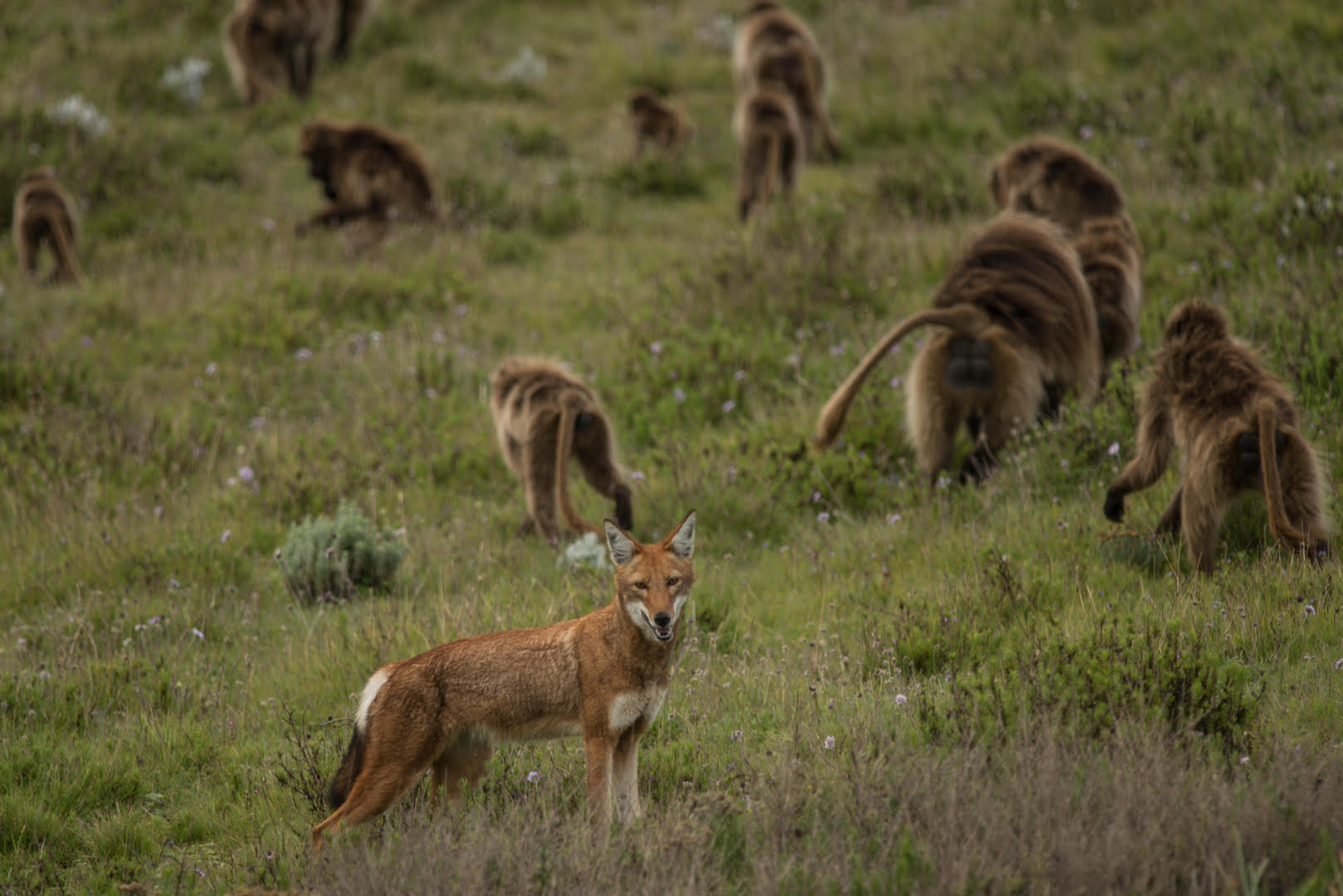As well as having complex relationships with their own species, wolves also have intriguing relationships with other wild animals.
Most of these relationships revolve around prey. Ravens follow wolves to scavenge their kills and it’s believed they also lead wolves to prey so they will have something to scavenge.
Bears, especially grizzlies, chase wolves off a kill so they can chow down on the carcass. Sometimes, one wolf will taunt the bear while others dart in to grab a piece of meat.
These exchanges appear ferocious but rarely lead to injury for the wolves or bears. And often, even though they killed the prey, wolves will just lie down nearby and wait for whatever scraps the bear leaves behind.
But wolves and monkeys? That relationship was unheard of until a couple of years ago when researchers observed Ethiopian wolves hunting for rodents — and having more success — when they were among a troop of gelada monkeys, a type of baboon.
The wolves wandered through large groups of six to seven hundred geladas, with the primates showing no fear even when the predators were very close. And even though the wolves were perfectly capable of killing baby geladas, they rarely did.
The wolves always mingled with the monkeys during midday when rodents in the area were most active. Researchers speculate that the grazing monkeys disturb the rodents, making it easier for wolves to hunt them, and that the wolves deliberately avoid harming the monkeys to take advantage of this opportunity.
Photo by Jeffrey Kerby taken in the Guassa Community Reserve, Menz Region of the central highlands of Ethiopia.

